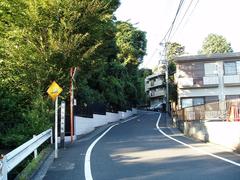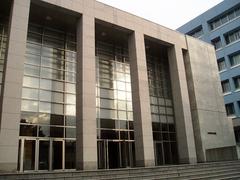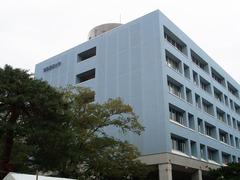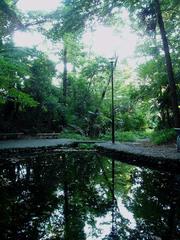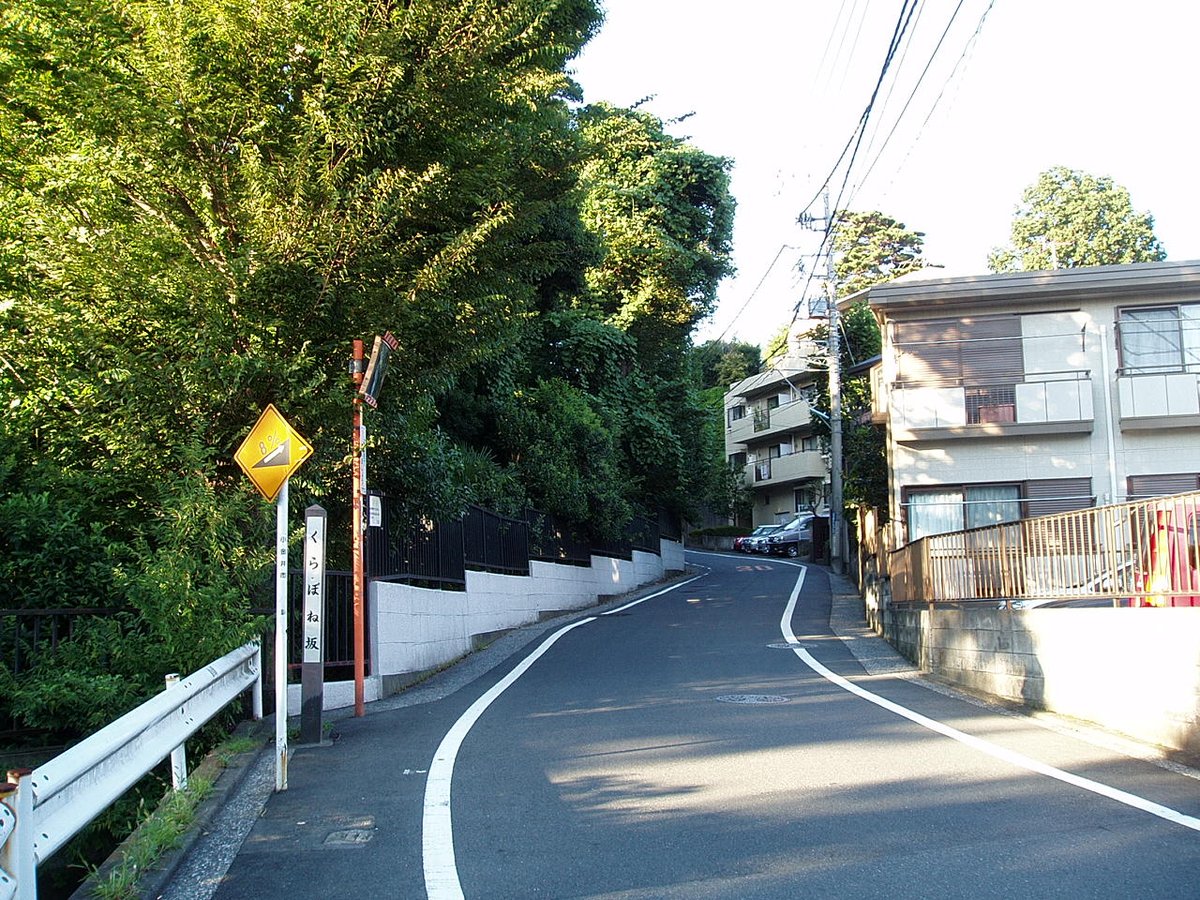
Tokyo Keizai University Visiting Hours, Tickets, and Guide to Tokyo Historical Sites
Date: 14/06/2025
Introduction to Tokyo Keizai University and Its Significance
Tokyo Keizai University, nestled in the tranquil Kokubunji area of western Tokyo, is an institution deeply interwoven with Japan’s journey through modernization, resilience, and academic innovation. Established in 1900 as the Okura Commerce School by visionary entrepreneur Kihachiro Okura, the university blends a legacy of practical business education with a commitment to ethical leadership.
The university’s location in Kokubunji enriches the visitor experience, providing easy access to centuries-old cultural sites like the Musashi Kokubunji Temple ruins and the Kokubunji Monument. The area is also known for its lush parks, traditional Japanese gardens such as Tonogayato Garden, and its convenient link to Tokyo’s metropolitan core.
This guide presents comprehensive and up-to-date information for anyone planning to visit Tokyo Keizai University or explore Kokubunji’s historical sites. It covers visiting hours, ticketing, accessibility, nearby attractions, and practical travel advice. For the latest details and interactive resources, consult the official Tokyo Keizai University website and the Kokubunji Monument visitor guide. Enhance your exploration with the Audiala app, which offers interactive maps and tailored historical content for sites across Japan.
Table of Contents
- Introduction: Discovering Tokyo Keizai University
- Historical Background and Significance
- Visiting Information
- Getting There: Directions and Accessibility
- Nearby Historical and Cultural Attractions
- Photography and Visual Highlights
- Additional Resources and Links
- Frequently Asked Questions (FAQ)
- Visiting the Kokubunji Monument
- Visiting the Tokyo Tower
- Discovering Kokubunji: Local Area Guide
- Summary and Final Tips
- Sources and Further Reading
Discovering Tokyo Keizai University as a Historical Site
Tokyo Keizai University is not only a center for academic excellence but also a living monument to Japan’s resilience and modernization. Founded as the Okura Commerce School, it stands as a testament to practical education and ethical leadership. The campus, marked by historical continuity and modern facilities, offers a unique perspective for visitors interested in Japanese culture, history, or higher education.
Historical Background and Significance
Founding and Vision of Kihachiro Okura
The university originated as the Okura Commerce School, established by Kihachiro Okura—an industrialist who founded over 200 ventures during the Meiji and Taisho eras. Okura’s aim was to nurture a new generation of business leaders grounded in practical skills and ethical values to support Japan’s growing role on the world stage.
Overcoming Adversity: Earthquake, War, and Rebirth
Tokyo Keizai University’s history is marked by resilience. The original campus was destroyed in the 1923 Great Kanto Earthquake and suffered further damage during World War II. The relocation and rebirth of the campus in Kokubunji symbolize a collective spirit of perseverance, known as the “TKU Spirit,” maintained by faculty, students, and alumni.
Postwar Transformation and Educational Philosophy
In 1949, the institution was officially renamed Tokyo Keizai University. It expanded its curriculum while maintaining its founding emphasis on ethical, practice-oriented education. The university’s motto, “Forward Forever,” reflects its commitment to continual progress and innovation.
Visiting Information: Hours, Admission, and Guided Tours
Visiting Hours
- Weekdays: Monday–Friday, 9:00 AM–5:00 PM
- Weekends: Limited access; check for special events or tours.
Admission and Tickets
- General Admission: Free for visitors interested in historical markers and the general campus.
- Special Exhibitions and Tours: Some may require advance booking or a nominal fee.
Guided Tours
Guided tours, focusing on the university’s history, architecture, and the “TKU Spirit,” can be arranged. These tours highlight significant campus sites, blending historical context with modern achievements. Advance reservations are recommended.
Getting There: Directions and Accessibility
- Location: Kokubunji, Western Tokyo
- Nearest Station: Kokubunji Station (JR Chuo Line, Seibu Kokubunji Line)
- Walking Distance: 10 minutes from Kokubunji Station
The campus is fully wheelchair accessible, with ramps and elevators. For specific accessibility needs, contact the university’s visitor center ahead of your visit.
Nearby Historical and Cultural Attractions
Kokubunji offers a wealth of attractions in addition to Tokyo Keizai University:
- Musashi Kokubunji Temple Ruins: Explore the remnants of an 8th-century provincial temple.
- Tonogayato Garden: A traditional Japanese garden renowned for cherry blossoms and autumn foliage.
- Kokubunji Monument: A significant historical site commemorating the region’s Buddhist heritage.
Convenient access to central Tokyo allows for day trips to major districts such as Shinjuku, Kichijoji, and Nakano.
Photography and Visual Highlights
The university campus features a blend of historic monuments, modern buildings, and tranquil green spaces—ideal for photography enthusiasts. For official images and virtual tours, visit the university’s website and social media channels.
Additional Resources and Links
- Official Tokyo Keizai University website
- Kokubunji Monument visitor guide
- Tokyo Tower Official Website
- Tokyo Tourism Guide
- Japan Travel - Tokyo Destinations
Frequently Asked Questions (FAQ)
Q: What are the visiting hours for Tokyo Keizai University?
A: Weekdays from 9:00 AM to 5:00 PM; limited access on weekends.
Q: Is there an admission fee?
A: No, general campus visits are free; some tours or exhibits may have charges.
Q: Are guided tours available?
A: Yes, with advance booking recommended.
Q: How do I get to Tokyo Keizai University?
A: A 10-minute walk from Kokubunji Station on the JR Chuo Line.
Q: Is the campus accessible for visitors with disabilities?
A: Yes, with ramps, elevators, and accessible restrooms.
Visiting the Kokubunji Monument: A Historical Gem
History and Cultural Significance
The Kokubunji Monument, dating back to the Nara period, marks the establishment of provincial temples by Emperor Shomu and symbolizes the spread of Buddhism in Japan. The site features preserved ruins and reconstructed elements set in lush greenery.
Visiting Hours and Ticket Information
- Hours: Daily, 9:00 AM–5:00 PM (last admission 4:30 PM)
- Closed: Mondays (or next day if Monday is a holiday), New Year’s holidays (Dec 29–Jan 3)
- Admission: Adults 500 yen, university/high school students 300 yen, free for children under 12 and seniors over 65
- Group Discounts: Available with prior reservation
Guided Tours and Programs
Guided tours are held at 10:00 AM and 2:00 PM daily. Seasonal events and workshops, including tea ceremonies and reenactments, are offered throughout the year.
Access and Facilities
- Access: 10-minute walk from Kokubunji Station
- Accessibility: Wheelchair accessible paths and restrooms
- Amenities: Visitor center, gift shop, nearby dining options
Tips for Visitors
- English signage and audio guides are available; the Audiala app provides enhanced experiences.
- Spring and autumn are the most scenic seasons to visit.
- Respect the quiet atmosphere and preservation guidelines.
Frequently Asked Questions (FAQ)
Q: Are tickets available online?
A: Yes, at the official Kokubunji Monument website or on-site.
Q: Is photography allowed?
A: Yes, except in restricted areas.
Q: Are pets allowed?
A: No, to preserve the site.
Q: Is there parking?
A: Limited parking; public transport is recommended.
Q: Are there special events?
A: Annual festivals and seasonal events are held; check the official website.
Visiting the Tokyo Tower: Hours, Tickets, and Attractions
History and Cultural Significance
Tokyo Tower, completed in 1958 and inspired by the Eiffel Tower, is a symbol of Japan’s postwar recovery and modernization. It remains a central broadcast hub and a beloved tourist destination.
Visiting Hours and Tickets
- Hours: Daily, 9:00 AM–11:00 PM (last admission 10:30 PM)
- Main Observatory (150m): Adults ¥1,200; Children ¥700
- Special Observatory (250m): Additional ¥700
- Discounts: For groups, seniors, and persons with disabilities
Tickets can be purchased on-site, online, or through authorized agencies.
Guided Tours and Events
Multilingual guided tours are available and highlight historical and photographic spots. Events include seasonal illuminations and cultural festivals.
Access and Facilities
- By Train: 5-minute walk from Akabanebashi Station (Toei Oedo Line) or Kamiyacho Station (Tokyo Metro Hibiya Line)
- Wheelchair accessible: Elevators, ramps, and accessible restrooms
Nearby Attractions
- Zojoji Temple
- Shiba Park
- Roppongi Hills
Tips for Visitors
- Visit early or on weekdays to avoid crowds.
- Sunset offers the best views.
- Check the Tokyo Tower website for closures or events.
Frequently Asked Questions (FAQ)
Q: Are tickets required for children?
A: Yes, ages 4–12 at a reduced rate.
Q: Is Tokyo Tower open in bad weather?
A: Generally, yes, except during severe weather conditions.
Q: Can tickets be purchased online?
A: Yes, via the official website.
Q: Are guided tours included?
A: They are separate and may require reservations.
Q: Is photography allowed on observation decks?
A: Yes, with consideration for other visitors.
Discovering Kokubunji: Local Area, Dining, and Practical Tips
Campus Location, Accessibility, and Visiting Info
- Getting There: 30 minutes from Shinjuku by JR Chuo Line to Kokubunji Station.
- Campus Hours: Weekdays, 9:00 AM–5:00 PM. Check the website for special events.
- Guided Tours: Available for groups and prospective students; advance booking advised.
- Accessibility: Ramps and elevators throughout the campus and public transit stations.
Historical Sites and Gardens
- Musashi Kokubunji Temple Ruins: Free entry, open daily.
- Tonogayato Garden: Open 9:00 AM–5:00 PM; entry approx. 200 yen.
- Koganei Park: Features Edo-Tokyo Open Air Architectural Museum.
Dining and Accommodation
- Cafés, restaurants, and shopping centers are within walking distance of the campus and station.
- Accommodation ranges from business hotels to traditional inns. Book early during peak seasons.
Practical Visitor Tips
- Use Suica or Pasmo IC cards for travel.
- English signage is common, but learning basic Japanese phrases is helpful.
- Kokubunji is very safe; respect local customs.
- Carry some cash, though credit cards are widely accepted.
Seasonal Highlights
- Cherry Blossoms: Late March–early April at Tonogayato Garden and Koganei Park.
- Autumn Foliage: Late October–November.
- Festivals: Check local and university calendars for events.
Summary and Final Tips
Tokyo Keizai University is a living testament to Japan’s educational legacy and spirit of resilience. Its location in Kokubunji provides a gateway to both historic sites and the pulse of modern Tokyo. Visitors can enjoy free campus access, guided tours, and a wide array of nearby cultural and natural attractions. The area’s excellent transport links make it a perfect base for day trips to popular destinations.
For the latest information, visit the Tokyo Keizai University official website and the Kokubunji Monument guide. Download the Audiala app for interactive navigation, event updates, and curated historical content.
Embrace the opportunity to explore this unique facet of Tokyo’s landscape—your visit to Tokyo Keizai University and Kokubunji promises to be both enlightening and unforgettable.
Sources and Further Reading
- Visiting Tokyo Keizai University: History, Tours, and Visitor Information (https://www.tku.ac.jp), 2025
- Visiting the Kokubunji Monument: Hours, Tickets, and Visitor Guide (https://www.kokubunji-museum.jp), 2025
- Local Area and Nearby Attractions, Kokubunji and Tokyo Keizai University, 2025
